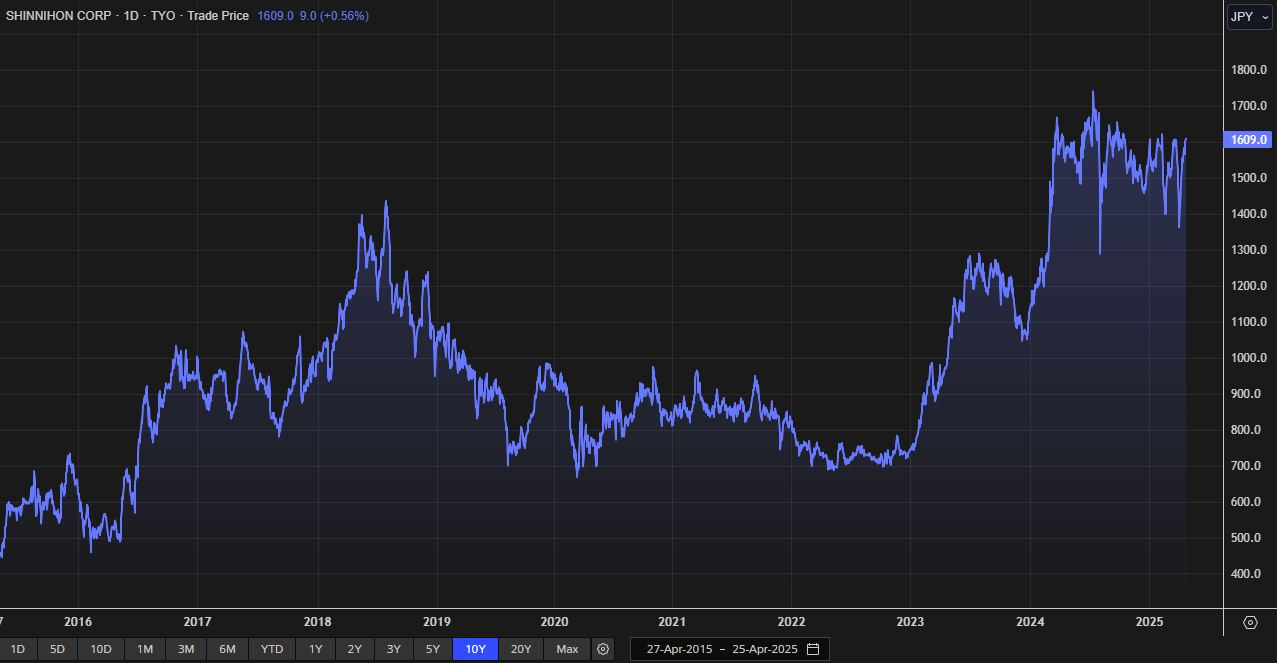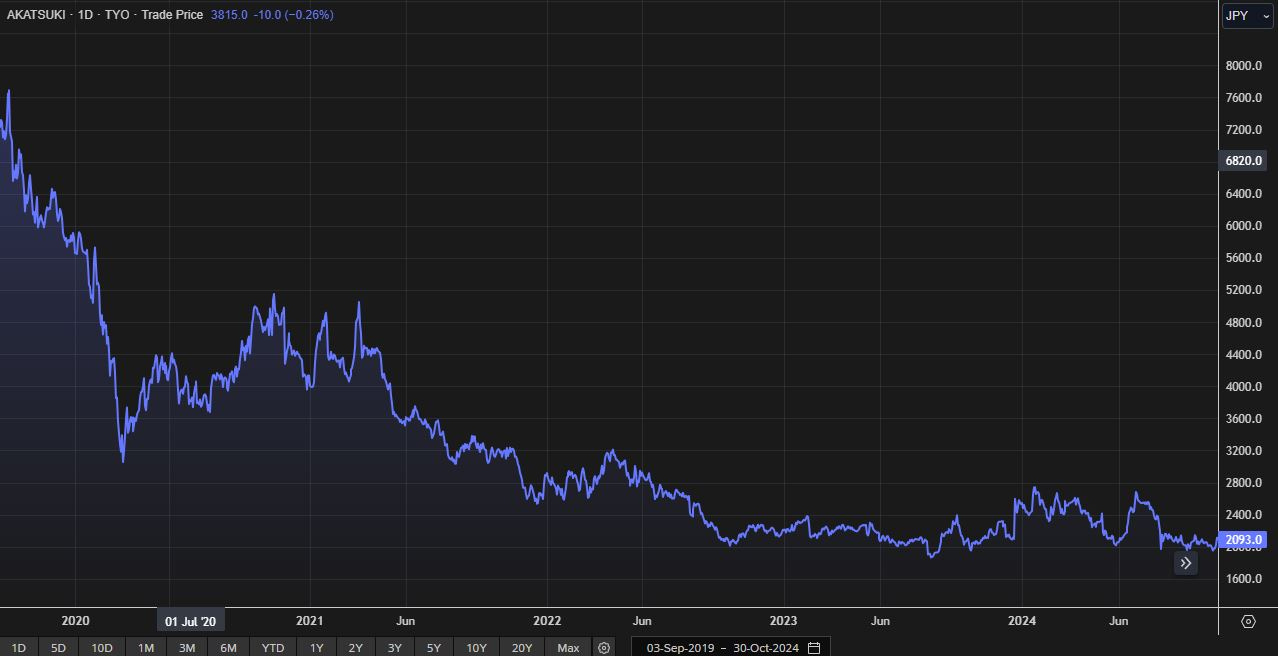The curious case of Japanese net-nets
How you can avoid value traps and beat the market with deep-value investing.
When I first started deep-value investing I uncovered an inordinate amount of Japanese stocks.
At first this seemed exciting, but I quickly realised that it wasn’t as appealing as I imagined.
In this article, I’ll explain a couple of nuances that will help you sift through the abundance of Japanese net-nets and focus on the most profitable ones.
When scanning for new ideas, I’m specifically interested in businesses that are both very cheap and quite healthy.
I want them to be priced below liquidation value but I don’t actually want to suffer a real-world liquidation.
I’ve got better things to be stressed about.
So ‘health’ is a key component.
For me, one signature of health is cash.
Both in terms of cash-flow from the businesses operations and also cash held on the balance sheet.
Another one is debt, or lack of it.
If I can buy a cash-rich, cash-flowing business that has no significant debts or liabilities at a very cheap price, I’m interested.
In Japan, there are many, many stocks with lots of cash, and little debt being sold for far less than their TBV.
How we make money
The key to flipping cheap stocks successfully can be broken down into two main parts.
First, you need to find something really cheap. It has to be so cheap that even if the business died tomorrow, you’d still make money from the liquidation sale.
Or, even if the business only carried on for a few more years at its recent levels of profitability, you’d end up in profit.
The bottom line is that you’d make your money back pretty quickly if you bought the whole enterprise, which reduces risk of total loss.
Second, you need a catalyst.
This just means that the market recognises the mispricing in one way or another and you can exit your position in the black.
Some investors obsess over catalysts, but usually a cheap stock will attract them organically.
For example, a competitor will try to snap up the business while it’s trading at a significant discount.
When this happens, existing shareholders will negotiate a price that leans more towards being ‘fair’ and anyone buying at bargain-basement levels (us) makes good money.
Another catalyst example is that the business will turn operations around and swing from losses to profits.
Even the mildest improvement can generate significant upside from prices that indicate imminent liquidation.
The key is to buy so low that you always profit from the catalyst that arrives as a result of the cheap price.
Catalyst attraction
It’s obviously impossible to predict the catalyst ahead of time, and when it reveals itself the price has already reacted.
But, there are other ways we can assess a stock for ‘catalyst attracting’ capabilities.
The simplest and most powerful one is to look at the stock price.
The behaviour of the stock price over recent years (2Y, 3Y, 5Y and 10Y) will tell you everything you need to know about how likely the stock is to attract a catalyst.
If a stock has been priced well below its liquidation value for several years by the time you find it, there is likely something going on.
Whatever it is deters catalysts in one way or another, or they would have already arrived.
Usually, the market views the management team as incompetent or unwilling to allow any catalysts to play out in the shareholder’s favour.
Maybe they constantly rebuff attractive buyout offers. Maybe they refuse to change their strategy to improve earnings.
Another stock-price clue is that the price hasn’t fallen much from its all time highs.
In fact, the price alone might look like a stock that’s simply increasing consistently over time.
Shinnihon Corp (1879.T) is very cheap to assets but its stock price hasn’t moved much.
The problem with this is that we’re unlikely to generate significant profit from these stocks in a reasonably short period of time (1-3 years).
Instead, the price is likely to continue ticking higher at the same mediocre rates that the business is growing at.
This type of stock-price behaviour is present in the vast majority of net-nets (and even general deep-value) stocks in Japan.
They may look cheap quantitatively, but the recent stock price indicates one of two things:
Future catalysts will not be allowed to positively impact the valuation
The future returns are likely to only mirror the stagnant growth of the business
Neither of these things will double your money any time fast, no matter how cheap they look.
Instead, the best opportunities are those that have a cheap valuation accompanied by a large decline in stock price, recently.
Akatsuki Inc (3932.T), was a business that became cheap after a huge, recent stock price decline:
And that’s one key lesson when scouring through Japanese (or any) net-nets.
Look for the ones that have become cheap through a large, recent stock price decline.
This indicates that the market has previously valued it well above its liquidation value and is likely to again should the right catalyst occur.
This is the foundation of a great deep-value portfolio.
A group of stocks that has a decent chance of doubling or even more when the market reprices them back to ‘normal’ valuation levels.
Margin of safety stack
Another common feature of cheap Japanese businesses is that they are often not cheap to earnings.
You can often find companies trading below NCAV but with double digit P/E ratios.
This, of course, indicates a business that has extremely weak earnings power and a management team with poor allocation skills.
Both, as previously discussed, can lead to difficulties when it comes to catalysts making any meaningful impact on shareholder value.
To protect against falling into value-traps like these, we need to find businesses that are cheap to both assets and earnings simultaneously.
A simple way to calculate this is to assess each valuation metric in its own right.
If the business is cheap to all of them, at the same time, you have a much bigger margin of safety in your favour.
Here are the core valuation metrics I use:
NCAV Ratio
TBV Ratio
EV/Earnings Ratio*
P/Earnings Ratio*
*I typically use FCF or Owners Earnings as my ‘earnings’ figure, and I use a multi-year average, for extra safety.
Not only do you have the asset value protecting the downside, but you have earnings powerful enough to pay you back in just a few years.
Even if the assets were stolen by aliens, you’d still likely make profit via the earnings, and vice versa if the earnings suddenly died.
You’re not relying on any single point of failure.
This not only helps us sleep at night, but it also increases the likelihood of us making money from the stock.
All of this in businesses that have been successfully operating for multiple decades provides a solid margin of safety stack against unexpected events.
Holding a group of these types of stocks, gives you a powerfully asymmetric opportunity to make money.
The bottom line
Japan is full of businesses that are cheap to any rational private business minded person.
However, we also need to be mindful of how we generate returns as passive shareholders and use that to our advantage.
Look for stocks that recently became cheap through a stock price decline and focus on the bets that offer a margin of safety stack, rather than any single measure.
If you hold 10-20 stocks of this nature, I strongly believe you’ll beat the market over any 5 year period.
PS, all the lessons in this article apply to all stocks, not just Japanese ones.






One obious thing I'd add: if control of the company is in play it is a catalyst.